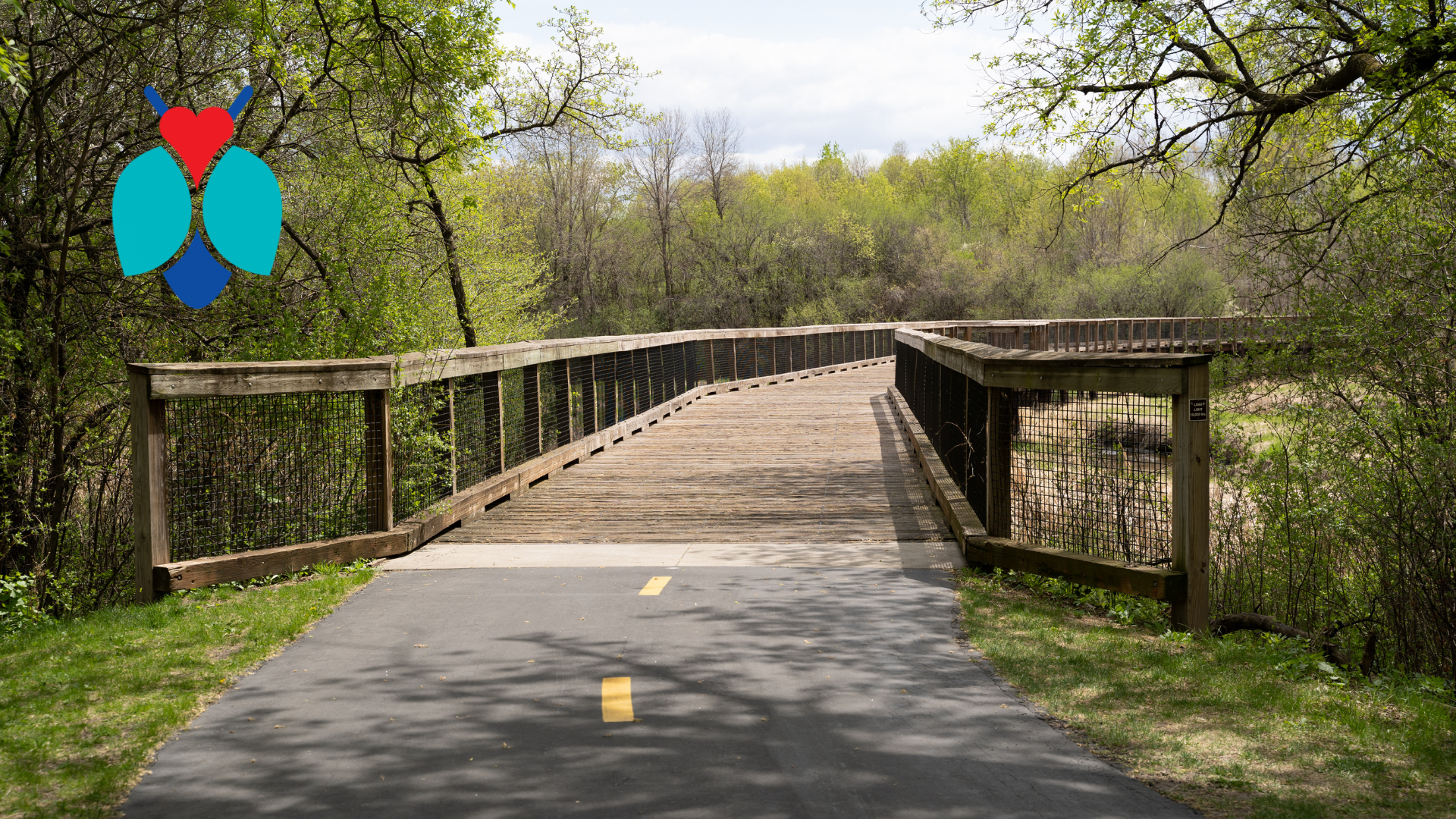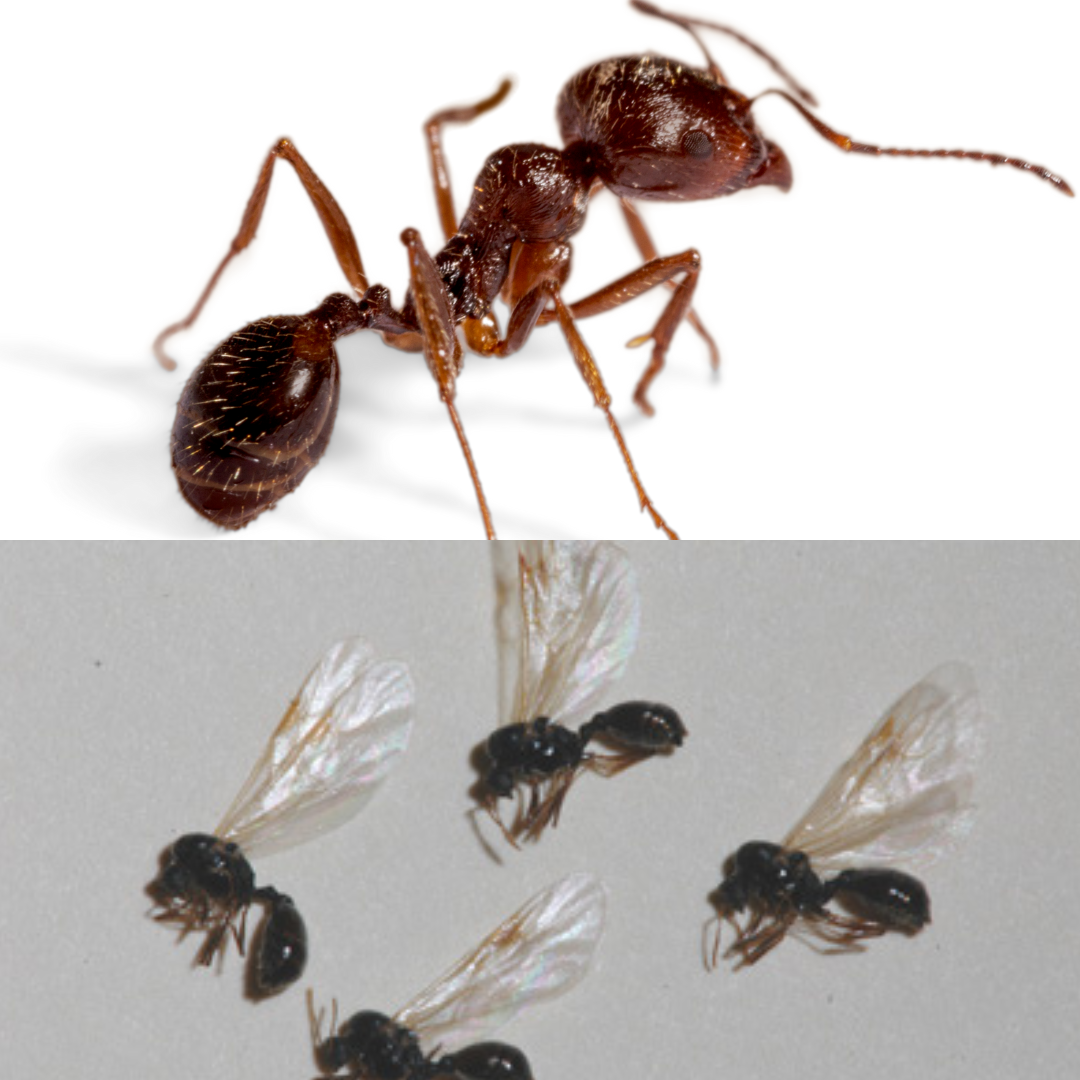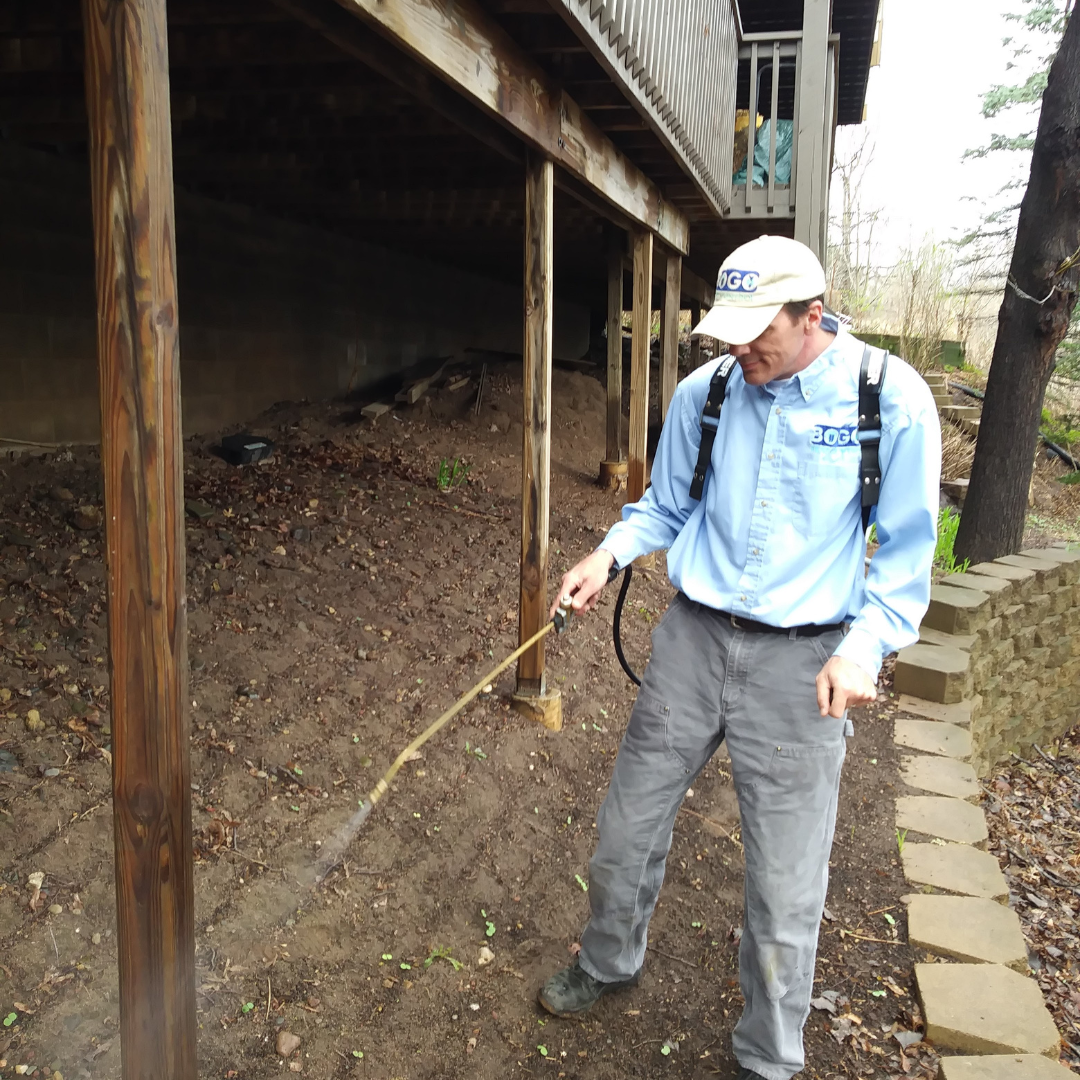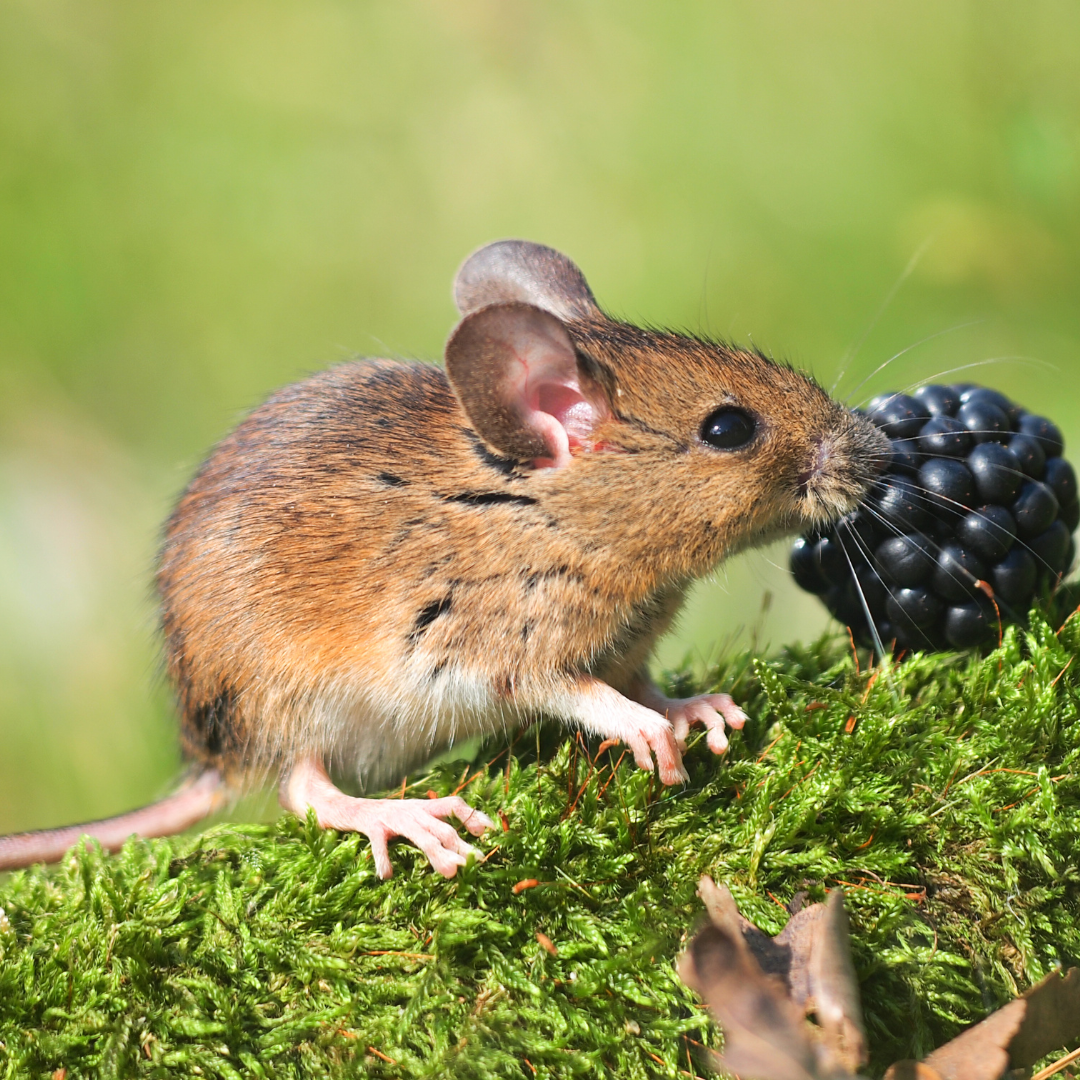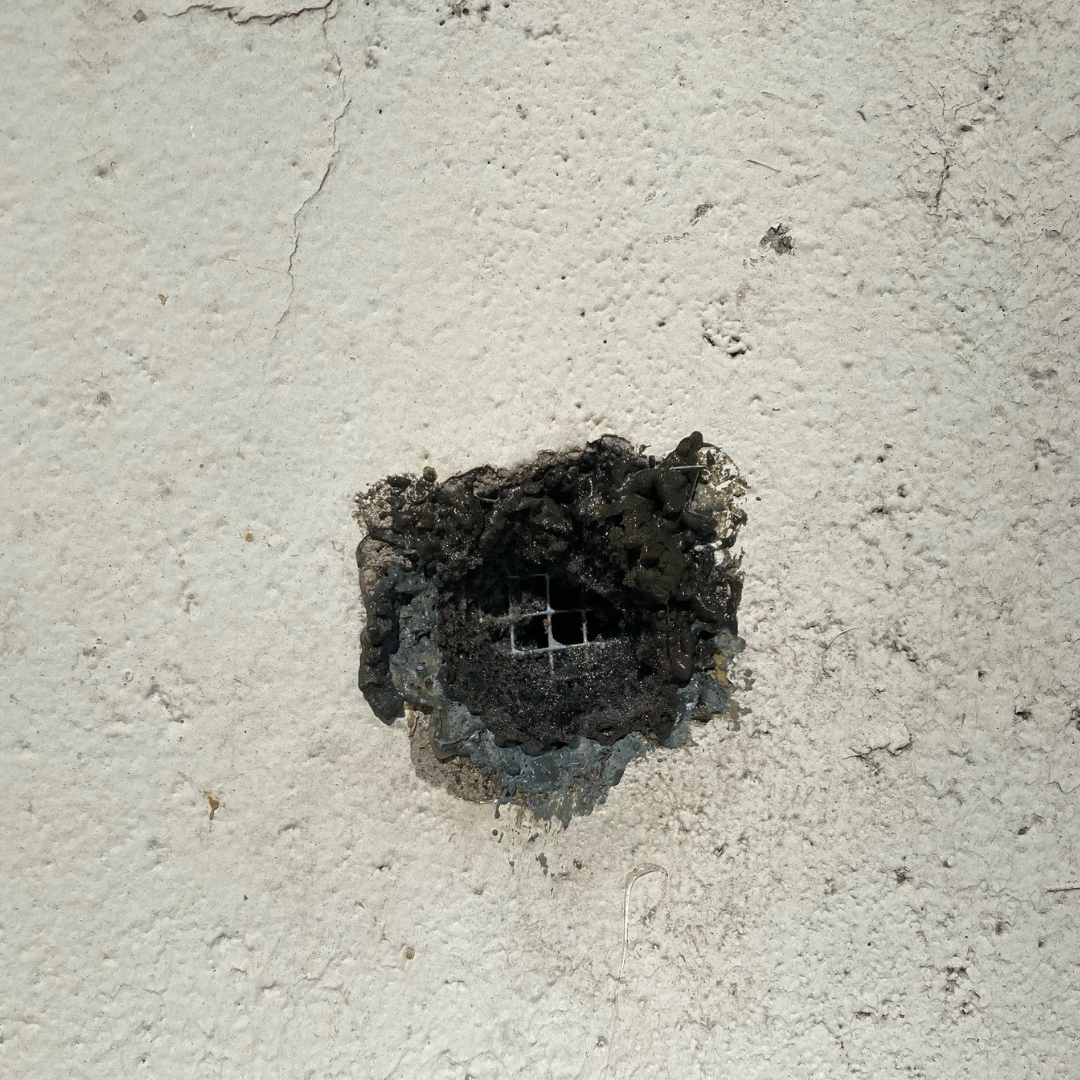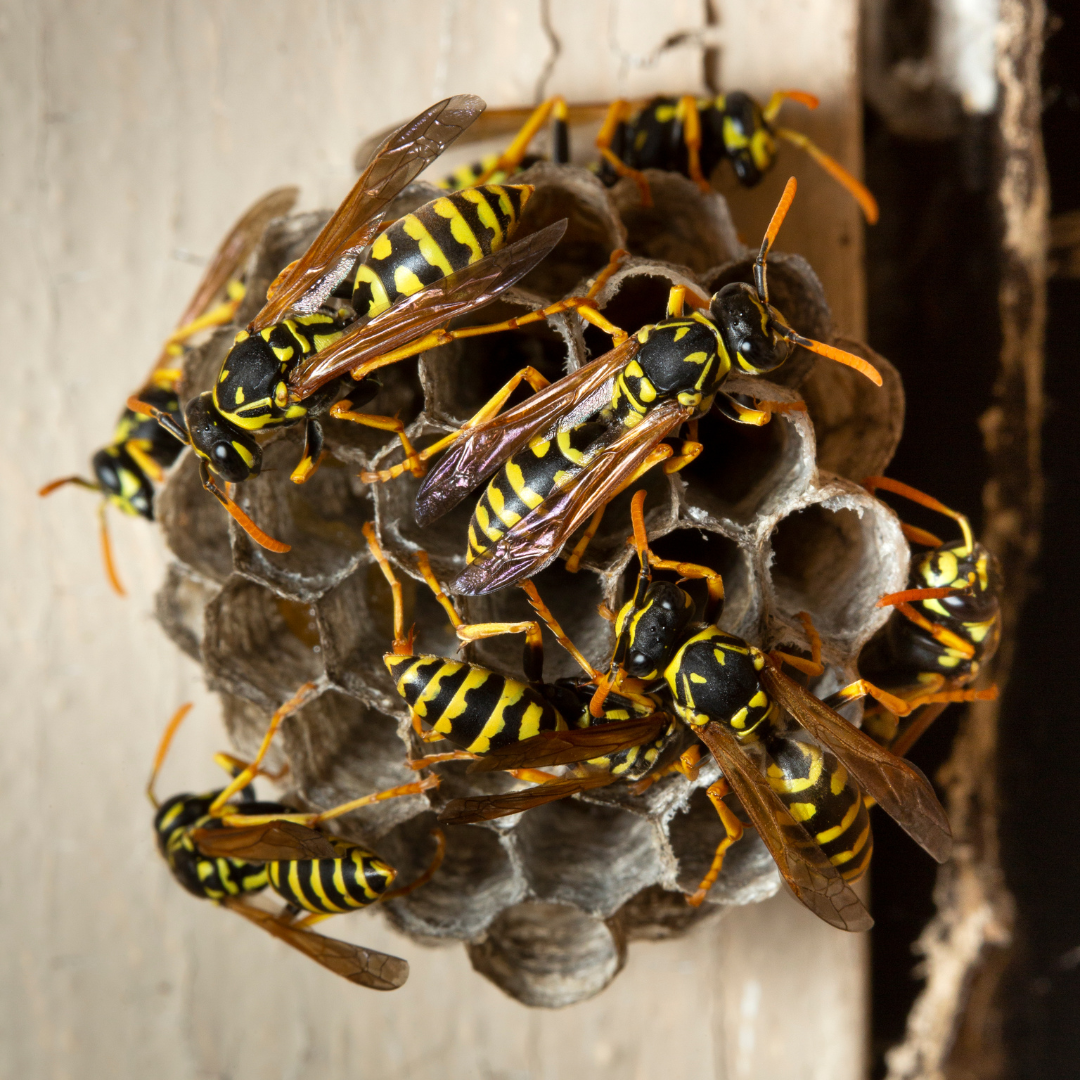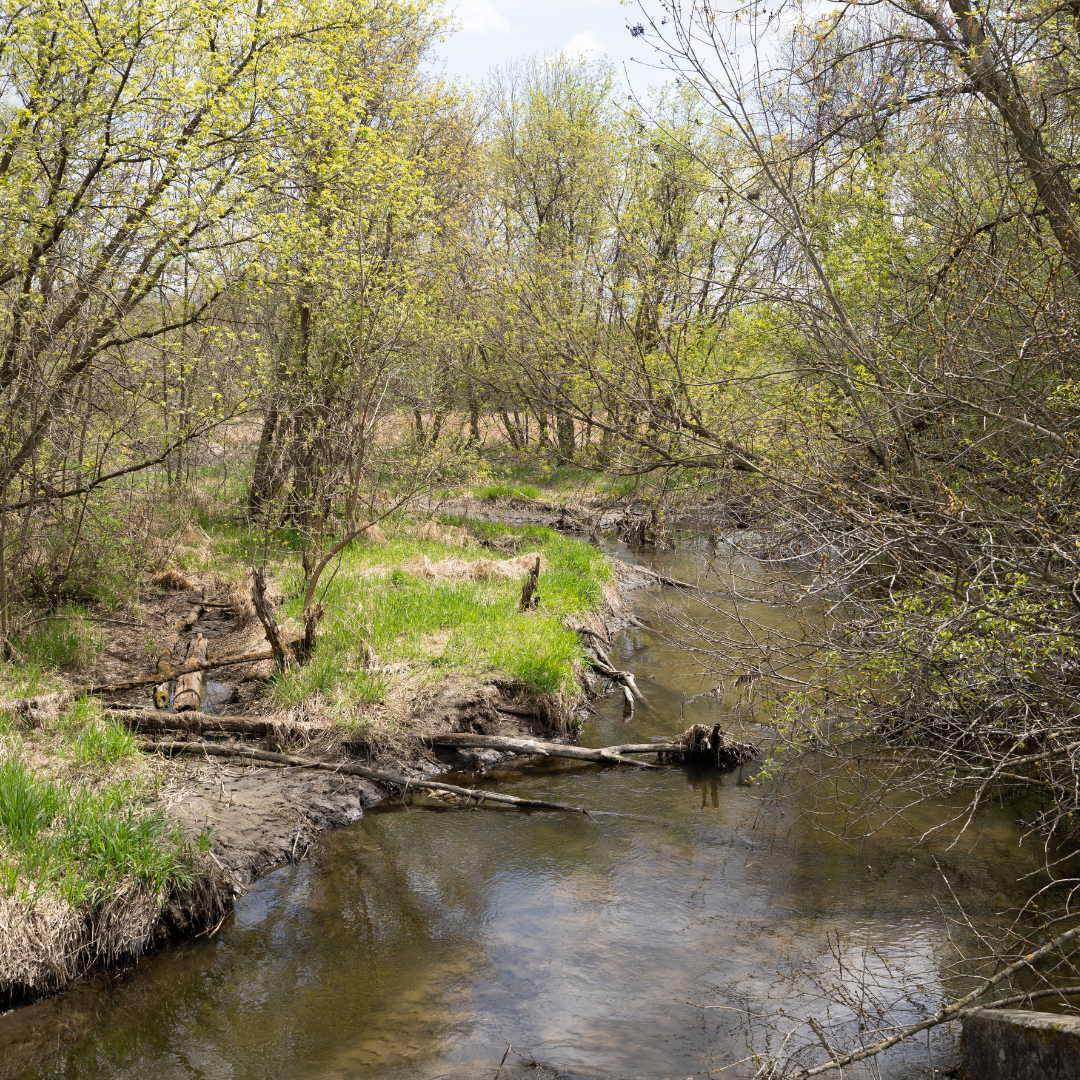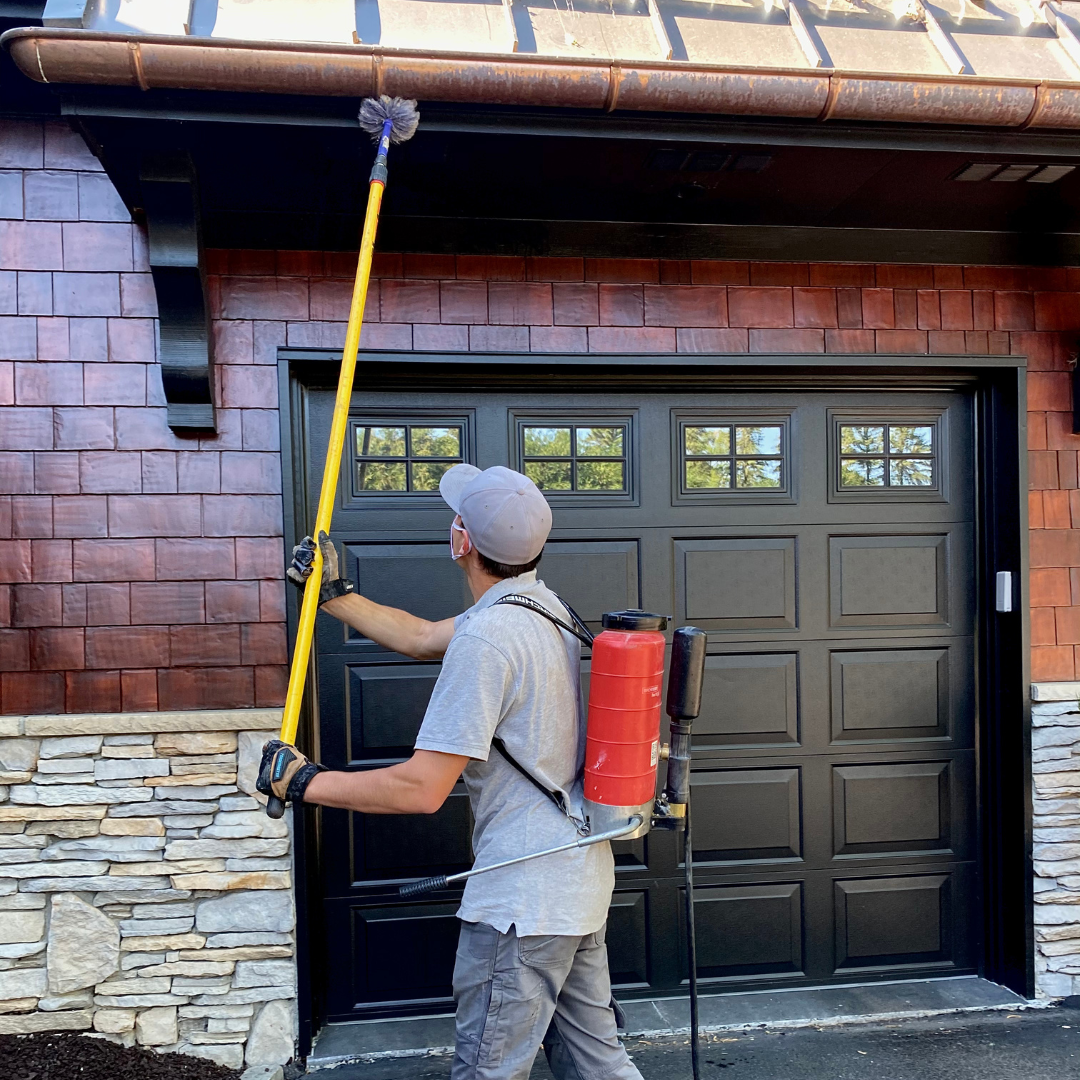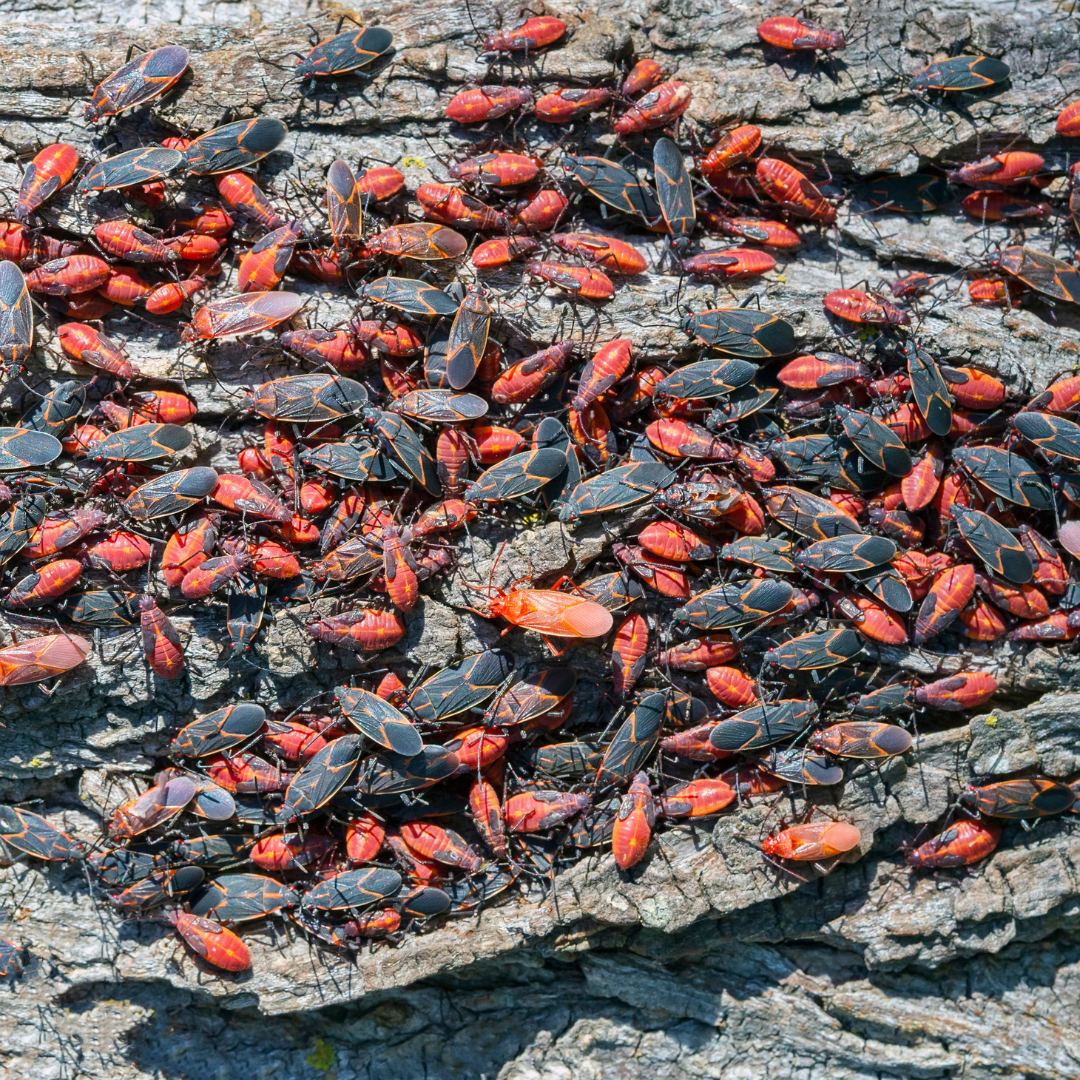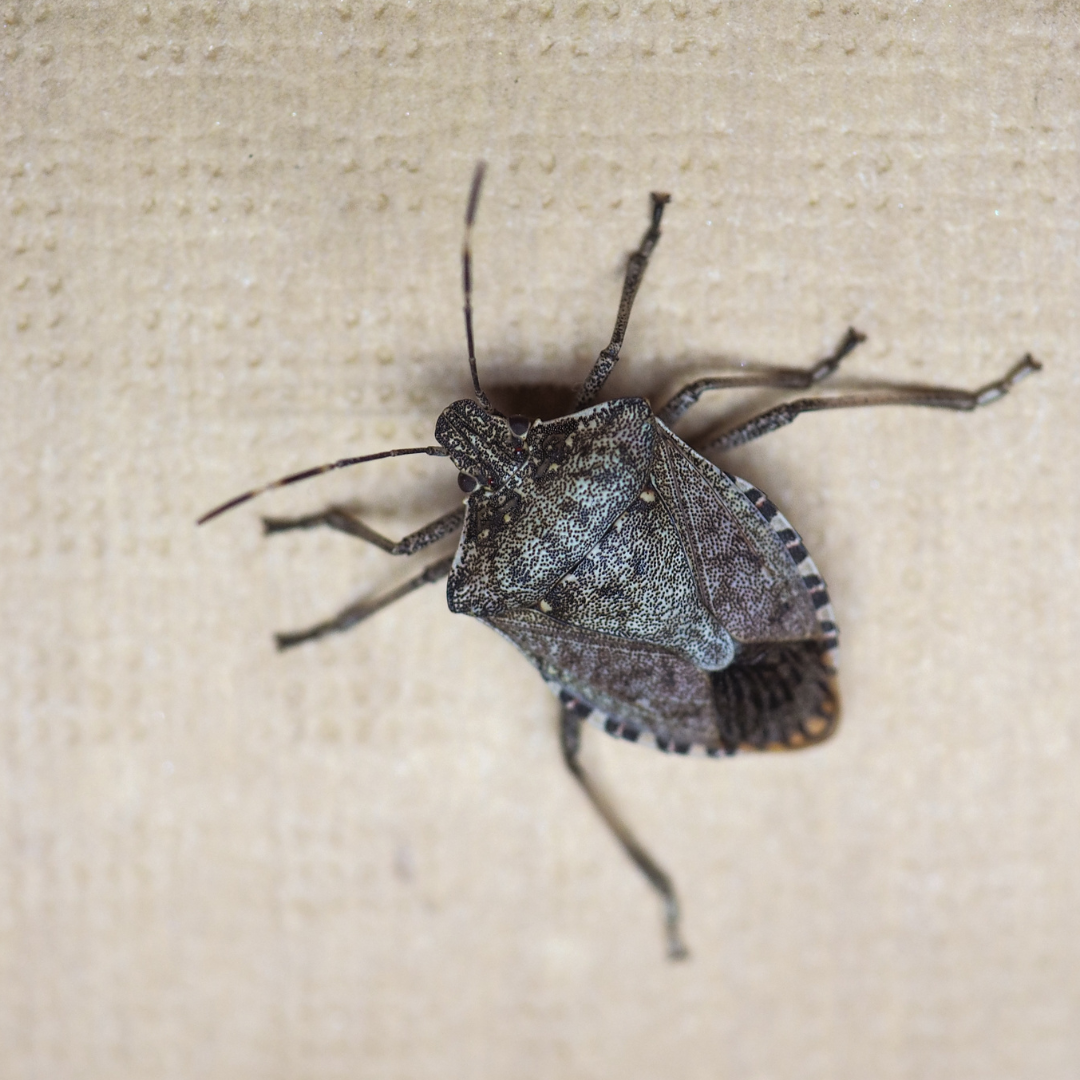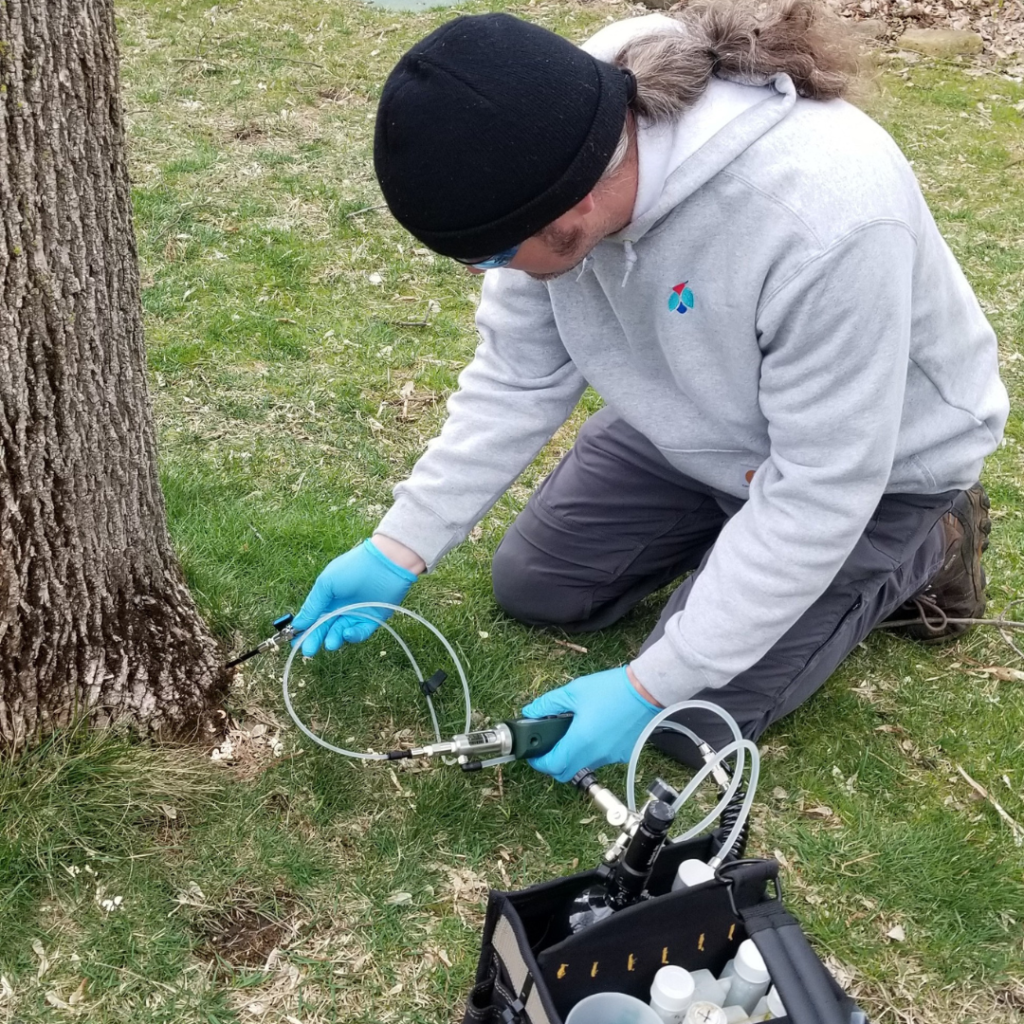Contact BOGO for All Your Maple Grove Minnesota Pest Control Needs
Maple Grove is a great place to raise a family. New shops and homes are being built each year. There are plenty of parks and wildlife that also make homes here susceptible to pests…
These are the most common pests found in Maple Grove Minnesota
(Click on the names to keep from scrolling)
To protect your home from all these insects and more our Insect Protection Plan or IPP is the most effective option
If you have any questions or concerns or would like to schedule an appointment call us or send us an email.
Call Us Today! 952-404-BOGO (2646)
Share This Page!
Ants in Maple Grove Minnesota
Carpenter Ants
Carpenter ants are often misidentified as termites. Termites have rectangular-shaped bodies while carpenter ants’ bodies are unevenly shaped. Comparable to the number 8. Carpenter ants vary between all-black or reddish-black. They live in parent and satellite nests. Their colonies start in parent nests with the queen, larva, pupa, and workers. Once this nest is at its full capacity some of the worker ants will leave and create a satellite nest to help them forage more food and raise more workers to help grow the colony. These satellite nests are commonly found inside homes. Carpenter ants do not eat the wood inside. They find areas with water-damaged wood and chew small tunnels through it to store food, their larva, and pupa. When carpenter ants are ready to breed they form swarms of winged male and female ants. This branding ritual is known as a nuptial flight and happens from April through July.
Length:
Worker: 0.35-0.5 inches
Male: 0.5-0.75 inches
Female: 0.75-1.0 inches
Pavement Ants
Pavement ants are commonly found inside homes in Minnesota. Their diets consist of a variety of foods that are protein-rich or rich in sugar. An example of some of the foods they like includes; dog food, seeds, nectar, insects, plants and fruit juices, etc. When they are found foraging inside many times they are foraging in single file lines known as ant trails. These ant trails lead to a food or water source and usually to an entry point into the room or outside. The ants are smaller than carpenter ants and have clubbed antennas. Their colors are somewhat similar but are brown or brownish-black instead of all-black like a carpenter ant. These ants also mate with each other by nuptial flight. The male and female ants are the same size as the workers. Their mating season is during the spring and summer.
Length:
Worker: 0.3 cm
Ant Service
All ants live in social colonies. The ants that leave the nest make up 10% of the ant colony. They are called foraging ants. The rest of the workers, larva, pupa, and the queen never leave the nest. Over-the-counter sprays only affect 10% of the ants that leave the nest. At BOGO we have products that allow the foraging ants to cross over the product without dying right away. This allows the ants to bring the product back to the colony underground. When using over-the-counter products the queen ant will not be affected. This means there will be no difference in ant activity. There may even be an increase in activity. It’s common for the colony to send out more foragers than before to offset the ants that were killed.
Click below to learn about our ant services
To learn more about ants visit our Minnesota ant identification page
Mice in Maple Grove Minnesota
Behavior
Mice live in groups of multiple females their young and one or two males. When living together they are focused on two jobs to stay alive. One of them is to forage and hoard food for winter and another is to breed. Mice do not hibernate in the winter and do not have a breeding season. Instead of a breeding season, they breed all year long. Each mouse can breed 1-10 times a year and each litter can have 2-8 pups. Over time a mouse problem inside a home can get out of hand quickly.
Mouse Service
Our mouse service is BOGO’s signature service that we provide. It’s been proven to be helpful for hundreds of customers. Our service starts with a thorough inspection of the property. During the inspection, our techs took pictures of entry points and evidence of mice on the exterior of the home. They then explain with 100% honesty the severity of the mouse problem. Whether it’s a simple fix or a job that is impossible for us to solve. Our techs will tell the customer what it will take to make their home mouse-proof. After the inspection, the customer decides whether they want us to come back. During the second service, the focus is to mouse-proof the home. We use materials that other pest control companies do not. We make sure that none of the holes we seal a mouse can chew through by always backing up our seals with two or more layers.
Click below to learn more about BOGO’s signature mouse service
To learn more about mice visit our mouse identification page
Wasps in Maple Grove Minnesota
Paper Wasps
Paper wasp nests are commonly found under soffits, overhangs, and garage doors. The nests are not large and are built in areas that protect them from rain. Their nests are made out of a thin papery pulp when it gets wet the nest is destroyed. Their nests are also unique in that there is no outer layer of the nest and all the hexagonal cells are visible from the outside. By the end of fall, the wasps in the colony die and the nest is not reused next spring.
Length: 0.75-1.0 inches
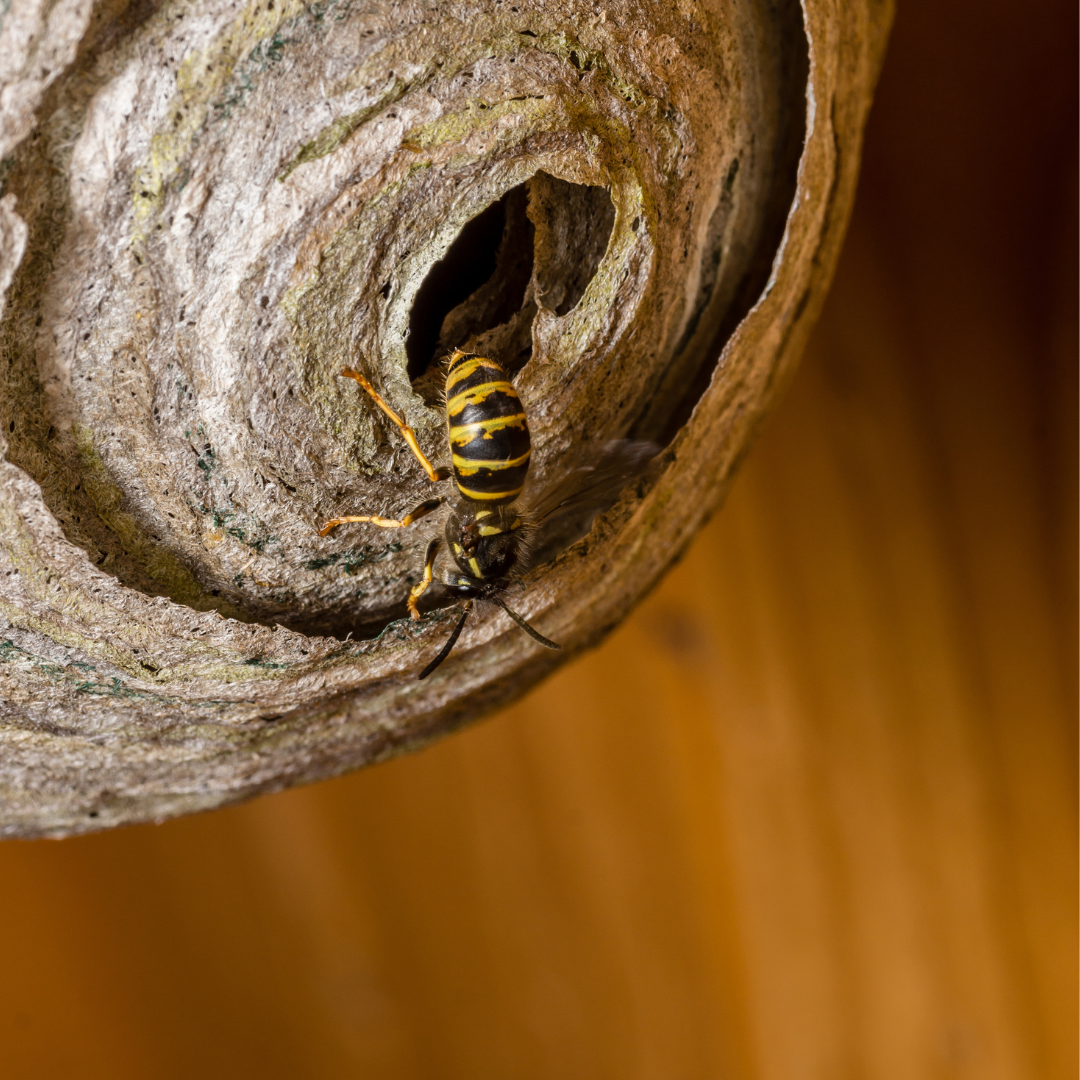
Yellow Jackets
Yellow jackets are a common wasp in Minnesota. Their nests are often only found in mid-summer or the beginning of fall. When a yellow jacket nest is at its full capacity there can be between 1,000-5,000 wasps in one colony. As their nests grow to these sizes they become extremely aggressive. When people find their nests they can be caught off guard. Their nests can vary in location so they can be hard to find. They are built inside buildings, underground, inside trees, and in aerial nests (in the photo above). The nest is not reused next spring.
Length: 0.5-0.75 inches

Wasp Service
For social wasps, there is never a single moment where all the wasps are inside the nest. Most wasps stay inside the nest including the queen. The wasps that leave the nest are foraging for food or nesting material. Over-the-counter wasp killers will not affect the entire colony. It will only kill the wasps that leave the nest. A product that kills the wasps instantly sounds good but in reality, the queen will still be alive reproducing more wasps. The product that we use, will let all the foragers bring it back to the colony to let it spread
Click below to learn about our wasp services
To learn more about wasps and bees visit our identification page
Spiders in Maple Grove Minnesota
Behavior
Spiders behave based on their accustomed way of finding food. As people know spiders eat insects. They help to make sure that there isn’t an overpopulation of insects in our ecosystems. But there are 2 different ways they catch their prey. There are spiders known as web-building spiders who build webs and let insects they want to eat come to them. Then there are hunting spiders. These spiders go out usually at night and hunt for their prey. Common web-building spiders include; the daddy-long-legs (aka harvestman), common house spider (in photo), and the yellow garden spider. As for the hunting spiders, the most common are; the wolf spider, sac spider, and jumping spider.
Habitat
Habitats that spiders prefer when inside. These include areas that are dark and often untouched. Some examples would be; under furniture, above cabinets, inside corners, and in any unfinished areas. If there is a significant amount of spiders living inside there may also be an ideal habitat for spiders outside your home as well. All spiders that live outdoors are drawn to the same type of habitats. These habitats all have one thing in common: they attract insects. Habitats that are moist and near water areas attract insects like mosquitos, flies, ticks, and other bugs. When insects are abundant there will also be an abundance of spiders there to eat them.
Spider Service
The service that we provide for spiders is thorough and effective. We focus our time and energy on the exterior of the home. We do this by first knocking down any cobwebs. When we pray we focus on the areas with signs of spider activity. This includes the entire foundation of the home. to kill any of the spiders that may be going in and out of the home to hunt for insects. This is why the exterior barrier also affects the population of spiders living inside. We offer interior treatments where we will spray in the corners of rooms with high activity and unfinished rooms. This is not necessary to do every time. Once a year is more than sufficient. Since the exterior treatment battles the elements like the sun and rain. This leads to the product only staying effective for 2 months.
Click below to learn about our Spider Service
To learn more about spiders read our blog “We Love Living Near Woods and Water and so do Spiders!”
Boxelder Bugs and Stink Bugs in Maple Grove Minnesota
Boxelder Bugs
Boxelder bugs are regarded as fall pests. During the fall these bugs can be seen clustering along the outside of homes and buildings in search of places to overwinter. They prefer to sit on walls that are south facing so they can absorb the sun’s rays. In the winter boxelder bugs can be seen roaming around the inside during sunny days. The sun will warm up windows and the roof just enough for the bugs to have enough energy to wake up. They will not breed or lay eggs in the winter. In the spring and summer boxelder bugs spend time living on female boxelder trees. These trees are where they mate, lay eggs, and eat. They feed on the helicopter seeds that the trees produce.
Stink Bugs
Stink bugs are a relatively new pest here in Minnesota. They were first recorded in 2010 and since then their population has increased drastically. In the fall they fly from their breeding grounds to find places to overwinter. In the spring and summer stink bugs live in agricultural fields. They eat the crops and lay their eggs on the leaves. They commonly feed on; apples, sweet corn, grapes, and tomatoes. In the winter they can be seen roaming around on sunny days where the stink bugs that made their way into the attic or through windows will come out. They will not breed or lay eggs inside.
Boxelder and Stink Bug Service
The service we provide for boxelder bugs and stink bugs is done during the fall. The service is more effective when done before the stink bug and boxelder bug swarms show up on the home. The reason why is that there is a high probability that some bugs have already moved inside for winter. The service treatment is done on the exterior of the home. The product we use sticks to the house and stays effective for 2 months. During the service, we spray a large surface area of the home. From the foundation up to the soffit or as high as our backpack sprayer will reach. Both of these bugs are capable of flying so covering the entire siding is necessary for the service to be effective.
Click below to learn more about our boxelder/stink bug service
To learn more about stink bugs and boxelder bugs read our blog “Minnesota Fall Pests.”
Ash Tree Service in Maple Grove Minnesota
Benefits of Treating Ash Trees
Ash trees all across Minnesota are becoming infected by the emerald ash borer. These insects were first spotted in Minnesota in 2009. Each time an ash tree is infected it takes a few years before it is necessary to cut it down. Cutting a large ash tree can be more expensive than getting it treated. Even though the treatment still needs to be done every 2 years it still does not compare to paying over 10,000 dollars out of pocket to remove a tree. Another reason to keep your ash tree is the environmental benefit. One large ash tree is capable of absorbing 1000 pounds of carbon dioxide from the atmosphere. They also absorb nitrogen oxides, sulfur dioxides, and carbon monoxide.
Ash Tree Service
There are various ways to treat an ash tree that is infected by emerald ash borers. Unfortunately, not every treatment is as effective as the next. Here at BOGO, our professional arborist has tested all the treatment options and landed on pneumatic micro-injections. This treatment is the most effective treatment for trees. Many companies decide on picking the fastest treatment options that allow them to “treat” more trees in one day to make more money. During our service, we inject the product into the tree at each injection point individually. This allows the tree to take up the correct amount of product around the entire tree. Other treatment options make it impossible to know how much product one root took up compared to another.
For more information about the emerald ash borer in Maple Grove
Learn about the benefits of treating your ash tree and the emerald ash borer
To protect your home from all these insects and more our Insect Protection Plan or IPP is the best option
BOGO Provides Pest Control Services For the Twin Cities and Beyond! Just a Few Cities We Service For Include;
Anoka|Apple Valley|Bloomington|Burnsville|Coon Rapids|Champlin|Chanhassen|Deephaven| Delano|Eagan|Eden Prairie|Edina|Elk River|Excelsior|Golden Valley|Independence|Lino Lakes|Long Lake|Maple Grove|Maple Plain|Medina|Minneapolis| Minnetonka|Minnetrista|Mound|New Brighton|North Oaks|Orono|Prior Lake|Plymouth|Ramsey|Rogers|Shoreview| Shorewood|Stillwater|St. Louis Park|St. Paul|Victoria|White Bear Lake| Wayzata|Woodbury|
(Click on the cities to learn about what pests to watch out for in your area)
If you have any questions or concerns or would like to schedule an appointment call us or send us an email.
Call Us Today! 952-404-BOGO (2646)



